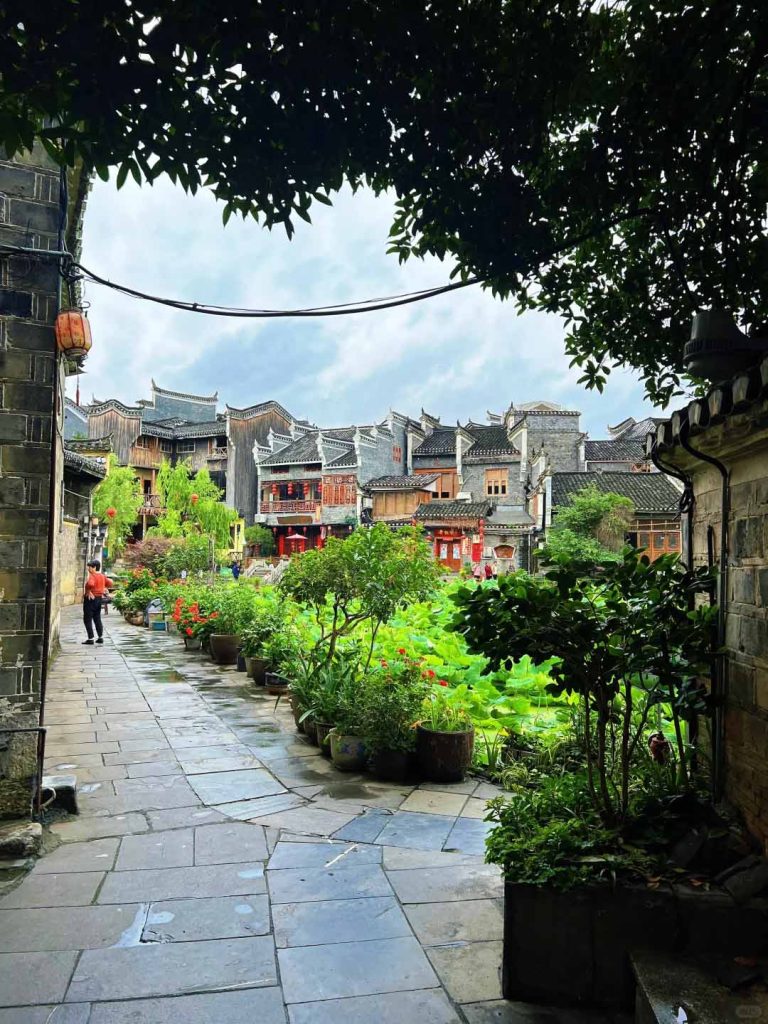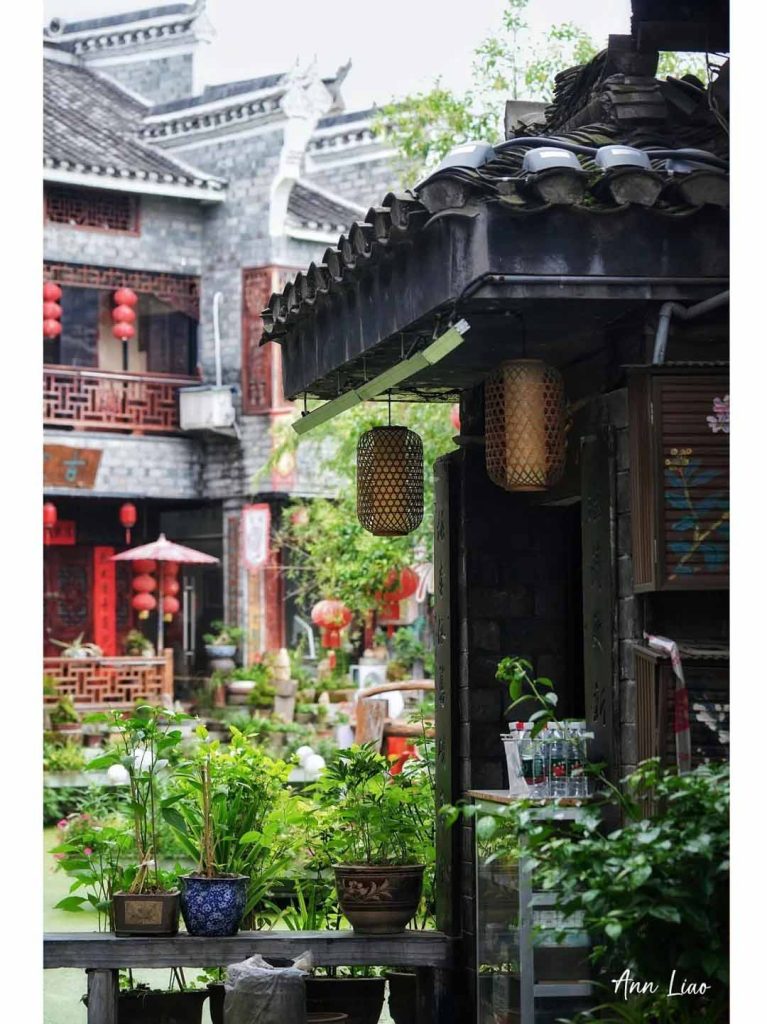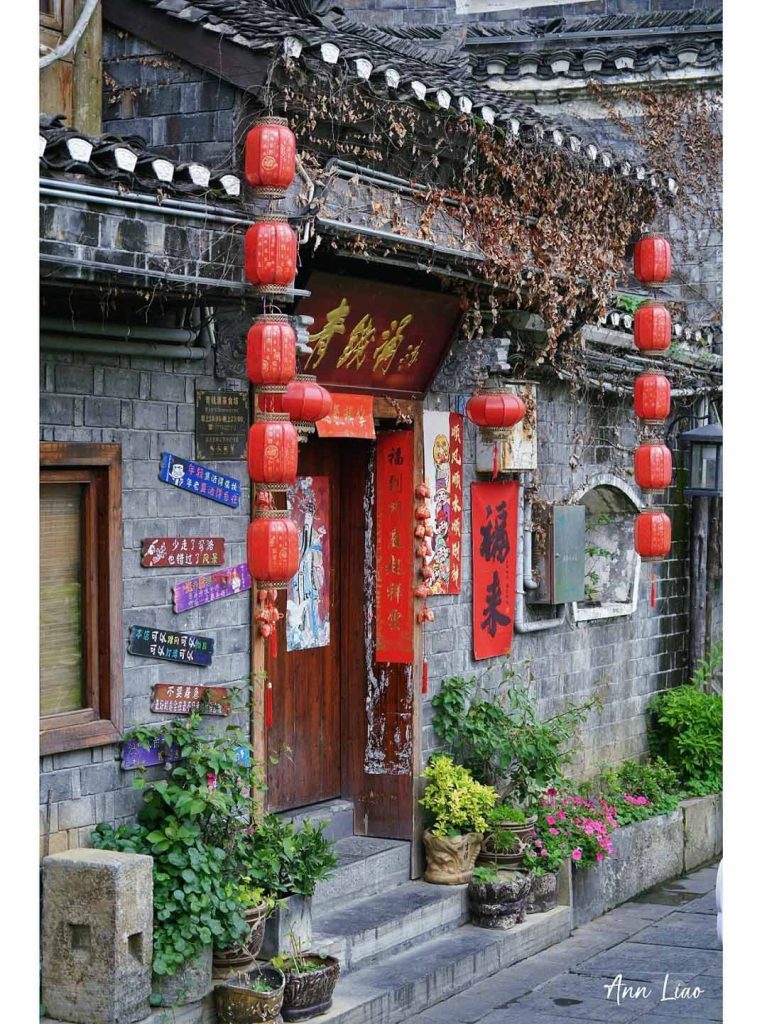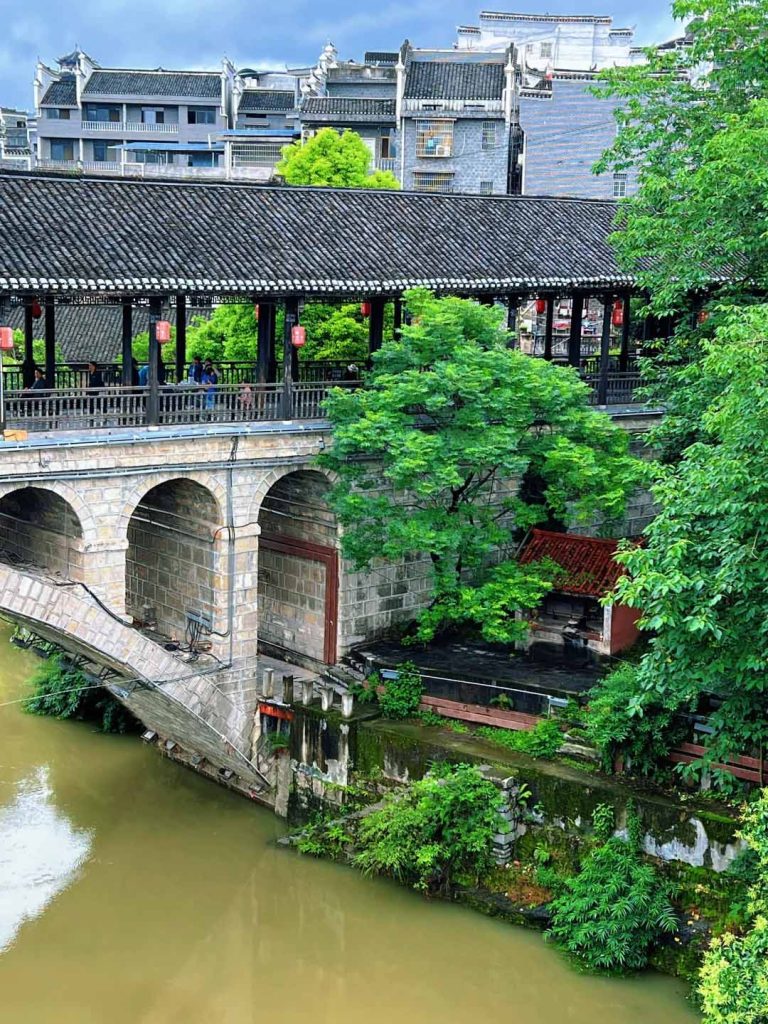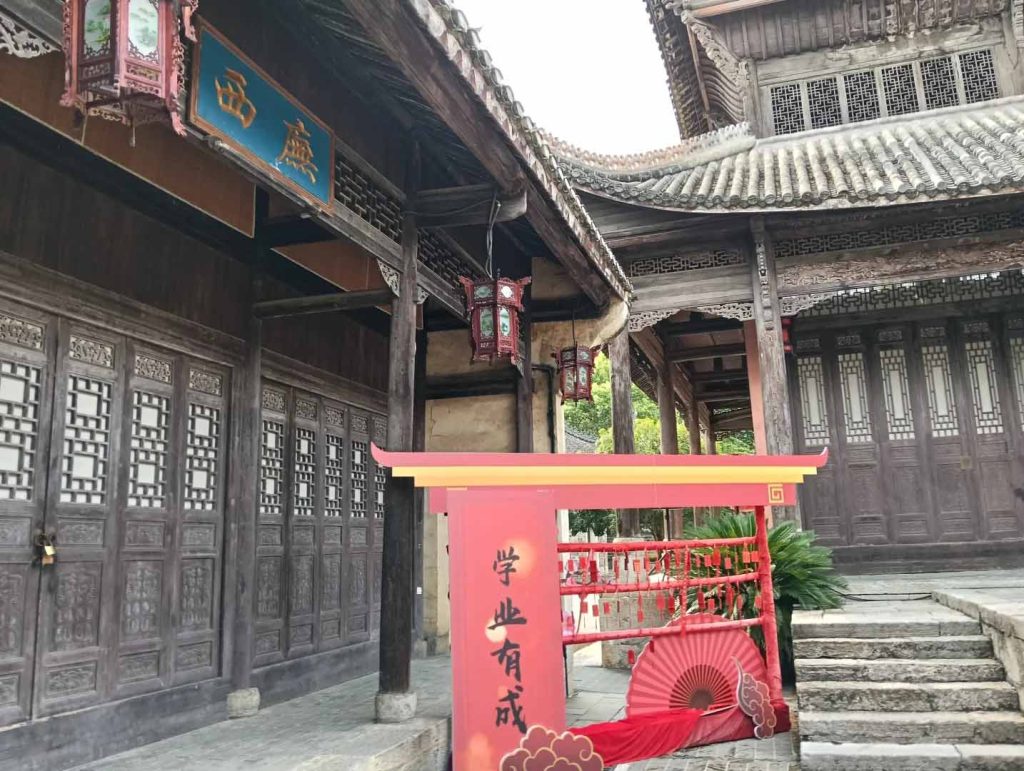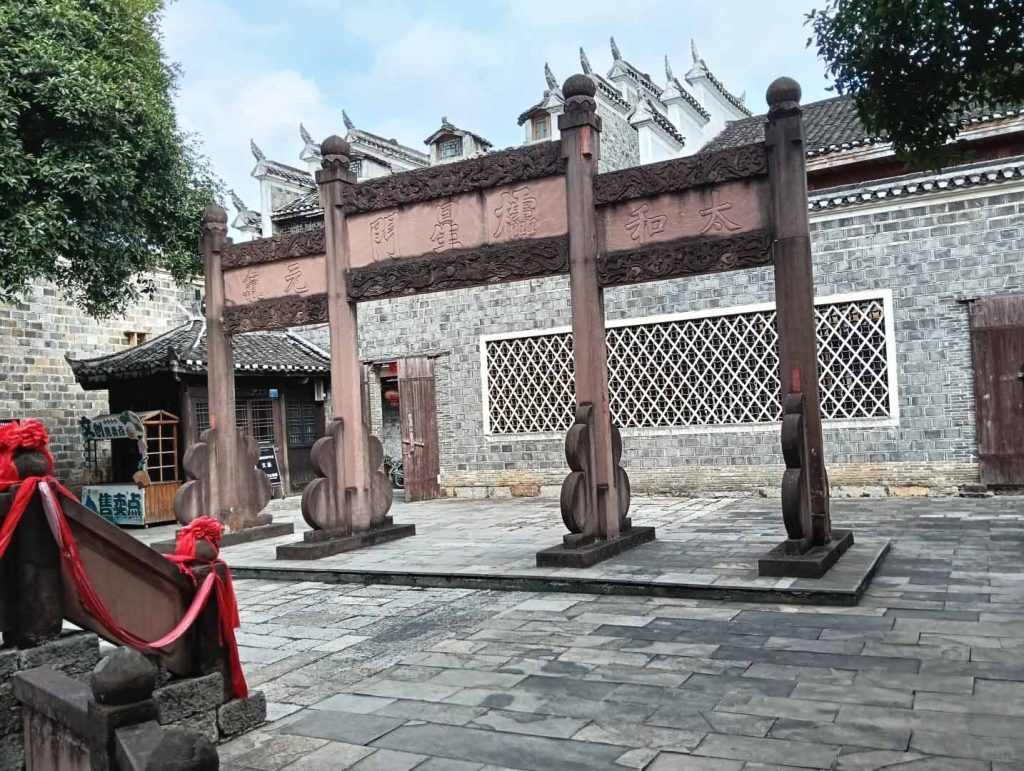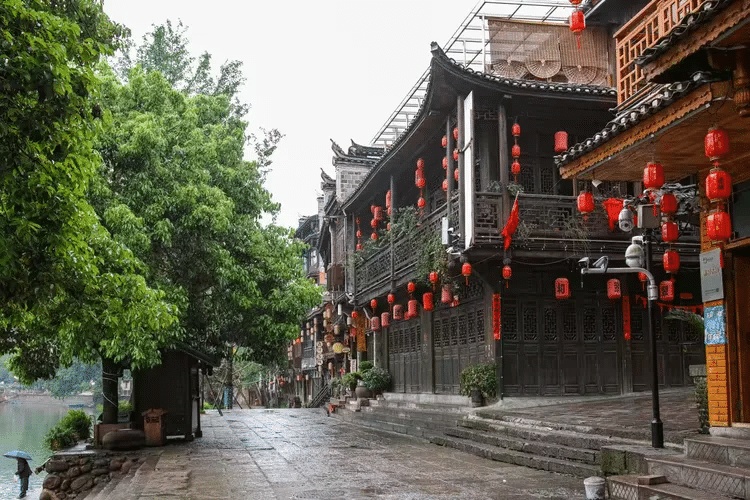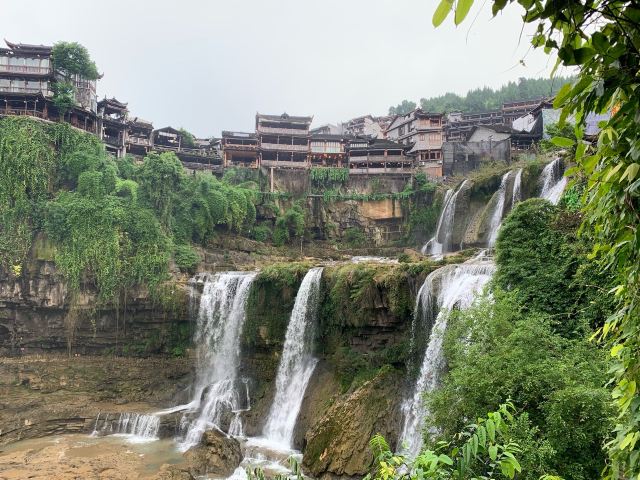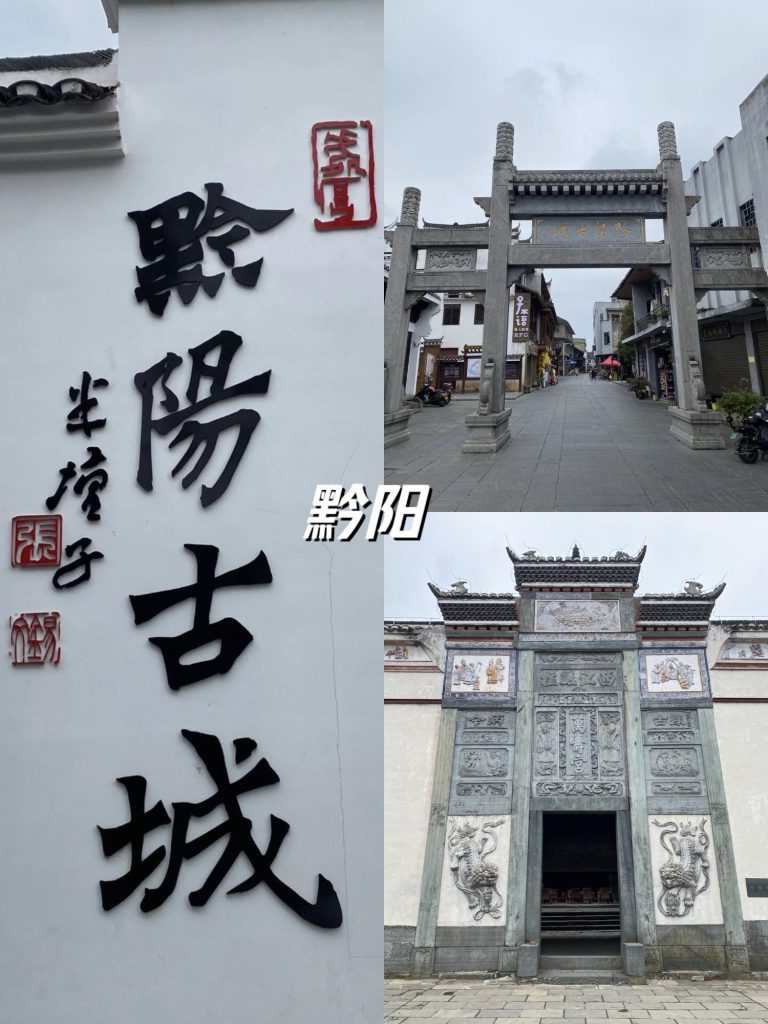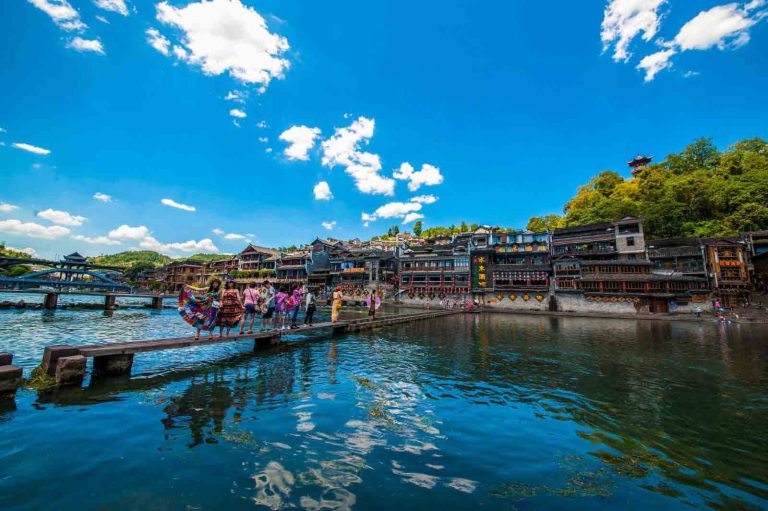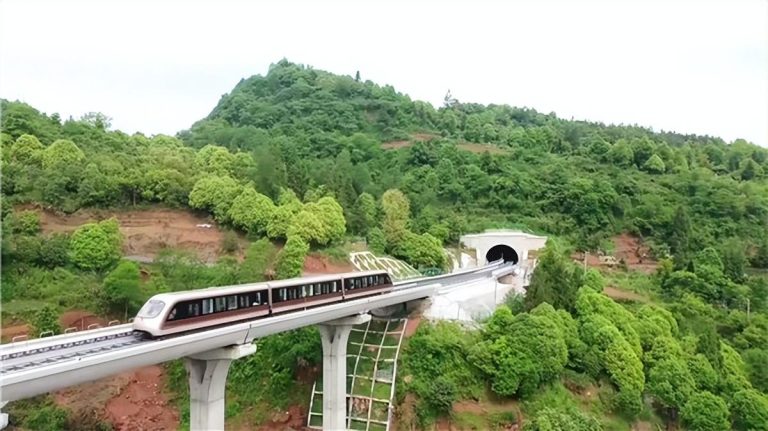Address
Renmin Middle Road, Jishou City, Jishou City, Xiangxi Tujia and Miao Autonomous Prefecture, Hunan Province
Open time
Open in the park; 09:00-22:30 open
Official phone
Ticketing consultation: 0743-8512997
Qianzhou Ancient City, this hidden historical gem nestled amidst the landscapes of Western Hunan, resembles a sage who has weathered the vicissitudes of time yet retains timeless elegance, quietly narrating tales spanning millennia. Situated along the banks of the Wanyong River within Jishou City, Xiangxi Tujia and Miao Autonomous Prefecture, Hunan Province, it occupies a uniquely advantageous geographical position at the heart of the border region connecting Hunan, Hubei, Chongqing, and Guizhou provinces. National Highway 209 and the Zhiliu Railway traverse the area like two mighty dragons, running north to south. This excellent transportation network has made it a popular tourist destination, attracting visitors from all directions.
Basic Information
The ancient city of Qianzhou has a long history, which can be traced back to the Xia and Shang periods more than 4,200 years ago. At that time, the indigenous ancestors thrived and lived on this fertile soil. After that, the thorns, the people of the scorpions, and the Miao people moved in one after another, injecting diverse cultural genes into the ancient city. During the Qin and Han dynasties, with the developed water transportation, it became an important commercial port wharf. The post stations and post roads to the south from the south to the north were rendezvous, and the economy was prosperous. In the Ming and Qing Dynasties, Qianzhou gradually developed into the core of the politics, economy, military and cultural culture of the border areas of Miaojiang, and it was also the first of the four ancient towns in western Hunan in all dynasties, and its important position was self-evident.
Stepping into the ancient city, the antique smell will come to you. Under the feet are the bluestone roads that have been polished over the years, and every stone slab seems to tell the story of the past. The architectural style of the city is unique, which integrates the characteristics of the Miao and Tujia ethnic groups and the charm of the traditional Han nationality buildings.
Features attraction
Three doors
The unparalleled Qianzhou ‘Three Gates Opening’ is undoubtedly the most iconic building in the ancient city. It stands by the Wanrong River, majestic. Different from other ancient cities, Yuecheng, there are three city towers in the ancient city of Qianzhou, with three city gates in the shape of a ‘pin’ layout. This unique design is not only the needs of residents’ life, commercial and transportation, but also a model of the perfect combination of military defense and specific terrain. Its architectural craftsmanship is exquisite, the materials are exquisite, the shape is spectacular, and it is strong and durable. Standing in front of the city gate, it seems that you can see the prosperous business scene and the tense military defense scene in the past.
Hujiatang
Hujiatang is like a bright pearl inlaid in the ancient city. It consists of a large pond and a small pond, covering an area of 2,800 square meters. During the Tang and Song dynasties, it already existed here, and after thousands of years of wind and rain, it still maintains a unique charm. The Anlan Well in the small pond is unfathomable. According to legend, it is connected with the Wanrong River, and it is the source of the water in the lotus pond. This well not only nourished the local people, but also played an important role in critical moments. In the 14th year of the Republic of China, the Sichuan army besieged the ancient city of Qianzhou, and the defenders and the people in the city held on to the well water of this well for a month, and finally successfully repelled the enemy. In order to commemorate this battle, Jinshi calligrapher and painter Yang Wei Vegetable specially inscription on Jingyan. The Qingfeng Bridge between the two ponds is connected bends, and the land hall beside the bridge is dedicated to the land master, carrying the beliefs of the local people. The Jilan Building next to it was built in the Guangxu period of the Qing Dynasty. There are many famous people around Hujiatang, and it is a treasured land of Feng Shui with outstanding people. Walking on the edge of the pond, enjoying the beauty of the lotus swaying and weeping willows, I feel the tranquility and peace, as if time has slowed down.
North City Gate (Gate Gate)
The North City Gate, also known as Gongji Gate, was built in the second year of Jiaqing in the Qing Dynasty. The tower is made of bluestone, glutinous rice and lime. The gate is 22 meters high and 40.2 meters wide. The overall momentum is magnificent, majestic and strong. There is a poem that said: ‘The four corners of the bluestone are square, and the glutinous rice and lime are weighed with a scale. From here, it seems that the spectacular scene of the army’s entry and exit and training of troops and horses can be seen, which makes people can’t help but be amazed at the subtlety of the ancient military defense project.
Ganzhou Confucian Temple
The Ganzhou Confucian Temple was built in the seventh year of Yongzheng in the Qing Dynasty, covering an area of about 4,887 square meters. It is an important cultural holy place in western Hunan. The main buildings include Minglun Hall, Wenchang Palace, Dacheng Hall, Dachengmen, Zhuangyuan Bridge, Lingxingmen, and Chongsheng Temple. The shadow wall of the Confucian Temple is about 18 meters long, and the diamond-shaped four-petal flower window in the middle is exquisitely designed. The left and right doors are titled ‘Virtue with Heaven and Earth’ and ‘Daoguan Ancient and Modern’, which shows the respected status of this place as a place dedicated to Confucius. Entering the Confucian Temple, the first thing that catches the eye is the ‘Lingxing Gate’ of the Four Pillars Stone Square, which means ‘Tshier’ and ‘Jinxian’. Crossing the Shifang Gate is the Yuechi, the clear water in the pond is clear, and the Zhuangyuan Bridge on the moon pond is beautiful. According to the tradition, those who are successful in their studies or students before the exam will come here to step on the bridge and worship Confucius, praying for a bright future and becoming famous. The two sweet-scented osmanthus trees by the bridge add the beautiful meaning of ‘the moon landing and turning the osmanthus’. Further back, the Dacheng Hall is solemn and solemn, and the ‘Yu Dao’ in front of the hall is carved with a pattern of a dragon, but this imperial road can only be walked by the emperor, and the ministers and those who are famous can only enter and worship from the left and right sides. Today’s Confucian Temple not only retains the essence of ancient architecture, but also carries rich historical and cultural connotations, making people feel a strong Confucian cultural atmosphere during the visit.
Ticket information
The ancient city of Qianzhou is free to tourists, so that more people can easily walk into this treasure house of history and culture and feel its charm. However, some small scenic spots in the ancient city may need to be purchased separately, and the specific cost can be consulted at various scenic spots in the scenic spot. This kind of ticket policy not only facilitates tourists to visit the overall style of the ancient city, but also allows tourists to choose to visit some characteristic scenic spots according to their own interests, which is very humane.
Note
- traffic: If you choose public transportation, you can take the urban and rural bus tourist line No. 18 bus or No. 1 bus at Jishou Railway Station, about 30 You can reach the ancient city scenic spot of Qianzhou in minutes; the Jishou East Station of the High Railway Jishou Station can take a taxi directly to the scenic spot, or you can take the No. 22 bus to go there. Tourists who travel on their own drive out of the expressway at the ‘Ji Shou South’ expressway, position and navigate the ‘Ancient City of Qianzhou’, and they can arrive at the scenic spot in about 10 minutes. However, in the peak tourist season, the traffic around the scenic spot may be more congested. It is recommended to plan the travel time and route in advance.
- play time: The ancient city attractions are generally open from 8:30 am to 22:00 in the evening, and the opening hours of the painting bridge are 9:00 in the morning – 22:00 in the evening. Visitors can choose day or night tours according to their own schedule. During the day, you can better appreciate the details and natural scenery of the ancient city architecture, and at night, you can feel the unique charm of the ancient city’s bright lights, and you can also enjoy the night scene projects such as the Qiancheng Lighting Exhibition and the Xiangxi Eternal City.
- Respect cultural customs: There are many ethnic minority residents such as Tujia and Miao people living in the ancient city of Ganzhou. They have unique cultural customs and religious beliefs. During the tour, tourists should respect the local customs and habits to avoid unnecessary misunderstandings caused by misconduct. For example, when visiting some religious places, it is necessary to keep quiet and abide by the regulations of the place; to respect and appreciate the local traditional handicrafts and folk performances.
- Food experience: There are many special delicacies in the ancient city, such as rice noodles, green balls, rice tofu, Baogu cake, oil cakes, sand-washed moon cakes, Peach blossom worms, hot and sour cubes, vinegar radish, dried state barbecue, dried state duck, Xiangxi society rice, Xiangxi sour meat, Xiangxi bacon, etc. When tasting food, pay attention to food hygiene and choose a regular restaurant to eat. Some delicacies may taste more spicy or unique. If you can’t eat spicy food, you can inform the store in advance.
- shopping consumption: There are many shops in the ancient city that sell special handicrafts and souvenirs, such as Miaoyin jewelry, Tujia brocade, wood carving, paper-cutting, etc. When purchasing, pay attention to identify the quality and price of the product, and avoid impulsive consumption. For some high-priced products, the price can be negotiated with the merchant appropriately. At the same time, pay attention to keep the shopping voucher, so that you can protect your rights and interests when there is a problem.
The ancient city of Qianzhou, a treasured place that integrates history and culture, natural scenery and ethnic customs, is opening its arms to welcome tourists from all over the world. Whether it is pursuing the footsteps of history, or enjoying a quiet time, or experiencing a unique national culture, the ancient city of Qianzhou can meet your expectations and leave you with an unforgettable travel memory.






